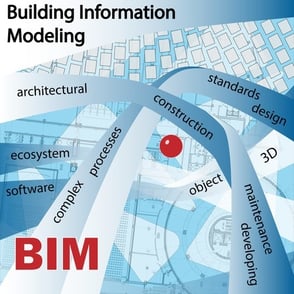In our newsletter published th is week, the article that received the most attention was titled 'Why Precast Should Pay Attention'. This was our title applied to an article that we circulated about a Cleveland, OH contractor's decision to offer integrated construction services. It obviously struck a chord, so we thought we would re-frame it as a question and respond with a deeper dive into how integrated construction is a threat to the precast industry.
is week, the article that received the most attention was titled 'Why Precast Should Pay Attention'. This was our title applied to an article that we circulated about a Cleveland, OH contractor's decision to offer integrated construction services. It obviously struck a chord, so we thought we would re-frame it as a question and respond with a deeper dive into how integrated construction is a threat to the precast industry.
It's no secret that construction productivity has lagged every other industry since the early 2000's. (We discuss this at length in our web report: The Promise of Smart Infrastructure in which we draw on a 2017 McKinsey Global Institute study that dives deep into the matter.) A primary reason for this is supply chain inefficiency.
Consequently, forward-looking contractors are seeing an opportunity to 'fix' this and increase profits by integrating vertically... which is to say eliminate subcontractors and perform the work themselves. In just the past 4 years this has become a tangible threat to complacent concrete manufacturers.
The company that started it all is a Silicon Valley technology company called Katerra. They describe the company on their web site this way:
"We are fully integrated, providing end-to-end building services as a single partner, with robust technology systems connecting everything together."

Since its founding in 2015, Katerra has been funded with $1.2 billion of investment. This presents clear evidence that the financial market agrees that there is waste in the status quo and profit opportunity in vertical integration.
A splash the size of Katerra is hard to miss so other contractors are also acting on the opportunity. Tober Building Company, the subject of the newsletter article, is making this leap. Skender, a major contractor in Chicago, recently announced its plans for vertical integration. This will only continue.
Is this bad news for subcontractors such as concrete manufacturers? Absolutely can be but not necessarily. In fact, for those that pay attention, it provides a road map for opportunity.
In an April 2018 interview with The Architect's Newspaper, Craig Curtis, president of Katerra Architecture, provided a most revealing insight to Katerra's ultimate objective. Consolidation per se is not the primary goal. As he put it:
"By moving from individual project thinking to a systems approach, we deliver greater precision, higher productivity, and improved quality control."
The objective is the shift in mindset and consolidation is the means for accomplishing this. The investors of $1.2 billion in Katerra weren't interested in buying a bureaucratic behemoth; they were investing in the business model.
This is a gift for any subcontractor paying attention. Figure out a way to offer your products & services with a seamless 'systems approach' and you are offering compelling value. This is what will differentiate you.
How does Katerra do this? Curtis offered several insights:
- Standardize product design allowing some flexibility for customization
- Eliminate cost that is attributed to waste (lean practices apply well here)
- Integrate BIM with the supply chain infrastructure
- Integrate manufacturing scheduling with construction scheduling
In short, make the design-manufacturing-construction sequence seamless. As Curtis put it:
"As a result, the activity at a Katerra construction site more closely resembles a process of precision-sequenced product assembly than traditional construction."
All of this is very viable today for unconsolidated suppliers.
When asked by the interviewer about the innovative technologies Katerra employs to integrate design, fabrication, and construction, we were not surprised that Curtis enthusiastically endorsed RFID tracking:
"A great example is our use of Radio-Frequency Identification (RFID). We add RFID tags to all the components fabricated in our manufacturing factory. These tags are accessible from mobile devices either on the production floor or in the final assembled product at the job site. Each RFID tag is linked to an archived file showing the entire assembly of the selected component, including video of each step in the manufacturing process. With this RFID technology, enclosed wall panels can be delivered to the job site, allowing local building inspectors and third-party verifiers to perform virtual framing and air sealing inspections. Application of RFID is just one of many ways Katerra is using technology to drive down costs, improve quality, and deliver a superior customer experience."
The good news is that RFID tracking and many other solutions for a seamless supply chain are readily available.
It is critical, though, that legacy companies are clear sighted about what is happening and take advantage of the available resources. The market forces at work can topple long-entrenched interests quickly. Need a reminder? Ask yourself where you can still find a Borders Books or Sears store.
If you'd like to discuss how we can help your plant participate more seamlessly in the supply chain with RFID tracking, please click below to schedule a conversation.
About Idencia
Our purpose at Idencia is to improve productivity throughout the value chain with RFID tracking solutions. Our subscription offering applies to products from the time of manufacture through end-of-life. As a cloud-hosted product tracking system that is seamless between manufacturers, contractors and asset managers, Idencia adds information value to all, eliminates redundancy and saves time.

Jun 28, 2019 5:36:40 PM




Comments